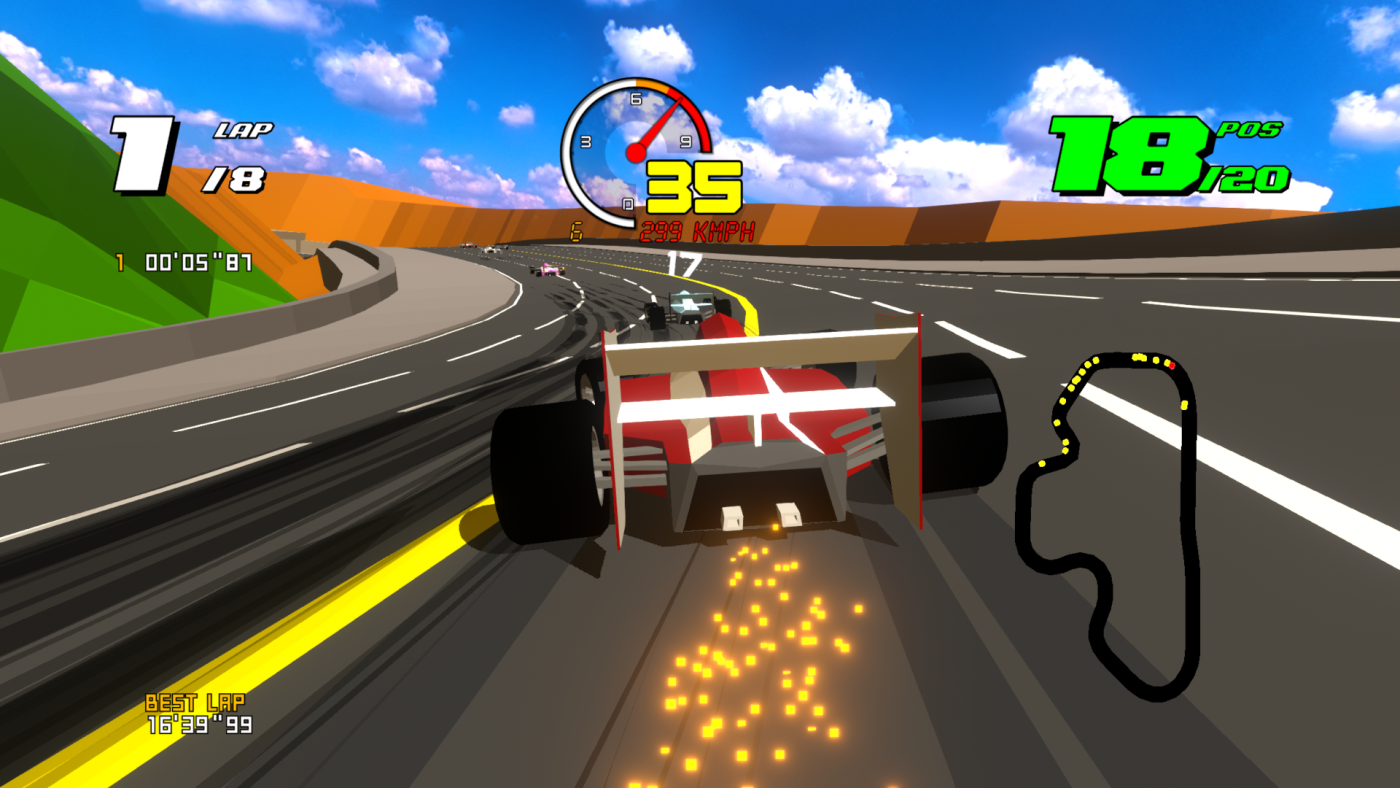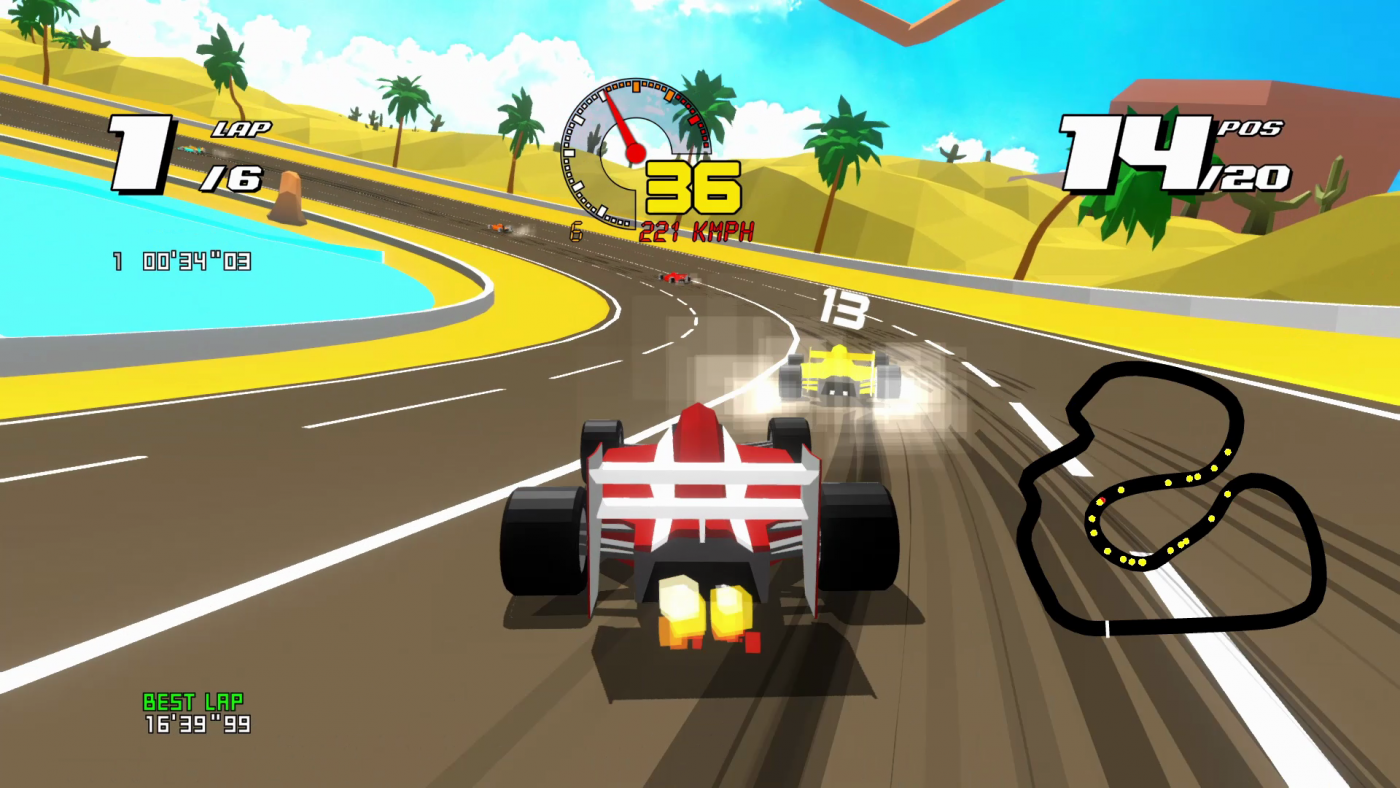The wheel of nostalgia never ceases its tumble, and the pointer has stopped on the era of flat-shaded polygons. Virtua Racing, SEGA’s 1992 arcade hit, is the inspiration – a fusion of F1 cars and urban courses. Suddenly a new epoch had arrived and games made of big rectangles weren’t restricted to simulators; they were showing up in coin-gobblers, too.
Formula Retro Racing eagerly pushes pedal to metal on the whole early 3D thing: blocky objects with bright colours, simple car models and a basic landscape that makes bigger structures leap out. From a rolling staaaaaart, you’re greeted with a large grid of competitors and a long loop around urban outskirts and extra-urban highways.
Automatic or manual transmission shifts you through eight available gears, and slipstreaming the car in front provides a significant boost to assist with overtakes. Similar to its forebear, the camera can observe your car from three perspectives; two rearward and one driver seat/bonnet cam view. There’s no sky-high helicopter view to mimic Virtua Racing’s awe-inducing zoomed-out graphical showcase, though, which is a shame.

Whichever view you select, whistling past attractive landmarks at high speed is always a delight. The chunky concrete buildings contrasting with a bright blue flash of sea, or the sudden grey-green expanse of angular conifers in amongst the cyclopean brown blocks of the Mountain course are always charming in their Fisher Price-style approachability.
There may not be any trackside structure as iconic as Virtua Racing’s Golden Gate bridge, and it omits little touches like VR’s windmills and amusement parks, but FRR always stays the right side of attractive.
Its grip on physics is less assured than its looks, mind. A collision will have unpredictable results, sometimes causing nothing more than a slight drop in speed, but just as regularly causing your whip to detonate in a shower of fibreglass and displaced wheels. The latter crash type resets your position, but often facing a wall or directly behind another racer, primed to collide.
There are a good few quality-of-life niggles that really show the difference between a AAA game (even a 30 year old one) and an indie release. The top-down map view is copied from Virtua Racing, but the reticule marking you out against the competitors is gone, making swift glances useless. The AI is unpredictable, and too often twitchy to the point of catastrophic. It’s teeth-gnashingly frustrating when a back marker swerves into your path, especially when you’re in first place on a difficult course.

Shorter tracks are raced over eight laps, longer ones six laps, meaning most competitions are 5 or 6 minutes long. This kind of clashes with the stripped-back arcade handling model. There’s not much nuance to FRR’s acceleration or braking (retro remakes tend to forget that arcade cabs had leading-edge analogue controls) and that, plus the lack of pit stops, means longer sessions at the wheel can strip the exhilaration out of play. That said, YMMV… digital-feeling control and race duration all fall under the heading ‘personal preference’.
It’s irrefutable, then, that there are a good few bugs in Formula Retro Racing, putting scuffs on the factory-fresh paintwork. It has enviable presentation and a nifty sense of speed, but under the bonnet there are some mechanical issues. Fun will be had, but you may want to wait a while for a sale or — ideally — a bug-fixed version, before taking this particular model out for a spin.

